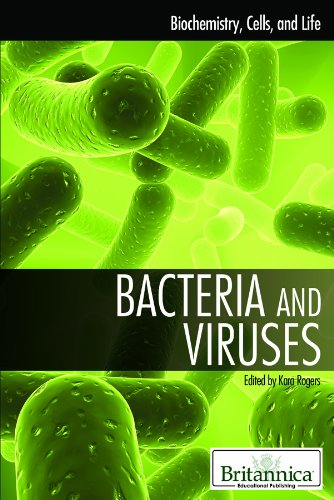-
Fungi, Algae, and Protists
Kara Rogers
Library Binding (Rosen Education Service, Jan. 15, 2011)Fungi, protists, and algae are among the most diverse life forms on the planet. Tiny protists range from plants to animals. Algae range from single celled plants to 60-foot-long kelp. Fungi occupy a kingdom of their own. Although their place in natureneither truly plants or animalsmay make them seem strange, they are actually quite familiar to us for their use in various foods, medicines, and biotechnologies. Indeed, our consumption of bread or reliance on penicillin would not be possible without these diverse eukaryotic organisms. This intriguing volume delves into the taxonomy, structure, and function of each group and evaluates their wide-ranging natural and societal impact.
-
The Eye: The Physiology of Human Perception
Kara Rogers
Library Binding (Britannica Educational Pub, Aug. 15, 2010)Explores the parts of the eye and how they function, including information on diseases and illnesses.
-
Bacteria and Viruses
Kara Rogers
Library Binding (Britannica Educational Pub, Jan. 15, 2011)Discusses bacteria and viruses.
-
The 100 Most Influential Scientists of All Time
Kara Rogers
Library Binding (Rosen Education Service, Feb. 1, 2010)Leonardo da Vincis study of mechanics led to the creation of early prototypes of flying machines and submarines. Biologist Carolus Linnaeus pioneered the hierarchal system of taxonomic classification in use today. Barbara McClintocks genetics research garnered her the Nobel Prize in Medicine. Detailed profiles of these and many other notable scientists are thoughtfully collected within these pages, and are supported by stunning photographs and images. Readers will be fascinated and inspired for years to come.
-
The Cardiovascular System
Kara Rogers
Library Binding (Rosen Education Service, Sept. 1, 2010)Though only about the size of a clenched fist, the human heart bears the immense burden of sustaining human life and activity. Functioning to circulate blood throughout the body, the heart is an organ on which all others intimately depend. This volume relates the anatomy of the heart and the effects of the diseases to which it is sometimes prone. Annotated diagrams and illustrations bolster the narrative and highlight significant aspects of cardiology and the incredible cardiovascular system.
-
Blood: Physiology and Circulation
Kara Rogers
Library Binding (Rosen Education Service, Sept. 1, 2010)Although its ubiquity in the human body may make it seem unremarkable, simply put, blood makes life possible. It nourishes cells throughout the body and transports carbon dioxide to the lungs. Without it, the body would be unable to fight disease and infection or function at all. Readers are invited to follow the course of this extraordinary fluid as it circulates through the body and learn about its component parts. Detailed diagrams supplement the text and allow readers a glimpse into the anatomy and life-sustaining properties of human blood.
-
The Chemical Reactions of Life: From Metabolism to Photosynthesis
Kara Rogers
Library Binding (Rosen Education Service, Jan. 15, 2011)The development and evolution of all species can, in many ways, be traced to a few biochemical reactions that facilitate metabolic and/or photosynthetic changes in each life form. Indeed, advances in the field of biochemistry have intimately depended on the study of these processes and the way basic molecules fragment and synthesize to produce elements vital to the survival of each organism. This insightful volume considers the various types, causes, and results of different reactions that operate at the cellular level and beyond to sustain biological activity.
-
The Endocrine System
Kara Rogers
Library Binding (Britannica Educational Pub, Dec. 15, 2011)Introduces the components, functions, glands, diseases, and disorders of the endocrine system.
-
The Kidneys and The Renal System
Kara Rogers
Library Binding (Britannica Educational Pub, Dec. 15, 2011)Details the anatomy of the renal system, development and function of the kidneys, and renal diseases and disorders.
-
Ear, Nose, and Throat
Kara Rogers
Hardcover (Rosen Education Service, Dec. 15, 2011)The interconnectedness of the ear, nose, and throat is evident when you consider how the smell of garlic cloves on the grill or chocolate chip cookies in the oven can affect your perception of their taste, or how a runny nose and scratchy throat can lead to an ear infection. In addition to enabling sensory perception, the ear, nose, and throat perform a number of vital functions in the human body. This incisive volume examines the structure of each in turn and in concert with the other, also exploring the diseases and disorders that sometimes afflict them.
-
Genetic Engineering
Kara Rogers
Library Binding (Rosen Young Adult, Aug. 15, 2018)The ability to alter the genetic code is one of the most powerful aspects of modern science. With genetic engineering, scientists can make a mouse's muscles bigger, create animals that are virtually identical to one another, and cause mosquitoes to pass fatal genes to their offspring, halting the spread of disease-causing organisms. Advances in gene editing, the ability to directly manipulate DNA, have placed even greater power in researchers' hands and renewed ethical concerns surrounding the implementation of genetic engineering. This comprehensive volume explores these topics, describes the methods by which scientists produce genetically modified organisms (GMOs), and highlights ethical issues associated with GMOs. Y
Y
-
Cloning
Kara Rogers
Library Binding (Britannica Educational Pub, Aug. 30, 2015)Since the early 2th century, when Hans Spemann first twinned salamander embryos, scientists have made astounding progress in the science and technology of cloning. They have now developed the means to apply cloning in research, agriculture, and medicine. With advancements in cloning techniques for stem cell research, scientists have been able to explore human diseases at a cellular level, attempting to better understand the cellular mechanisms involved in disease. Readers explore the history, science, applications, and ethical issues of cloning. Sidebars profile pioneers in the field, including John Bertrand Gurdon, Ian Wilmut, Shinya Yamanaka, and James Thomson.